With deep-sea mining, the Pacific Islands are caught between money and the environment
While most Pacific islands have escaped the worst of COVID-19 , a cornerstone of their economies, tourism, has taken a big hit. By June 2020, visitor arrivals in Fiji, Samoa, Tonga and Vanuatu had completely ceased, as borders were closed and even internal travel restricted . In Fiji, where tourism generated about 40% of GDP before the pandemic, the economy contracted by 19% in 2020.
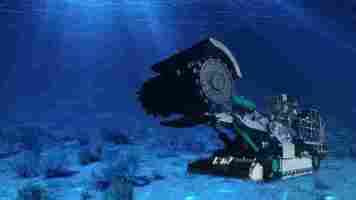
One economic alternative lies just offshore. The Clarion-Clipperton Zone (CCZ) is a deep-sea trench spanning 4.5 million square kilometres in the central Pacific Ocean between Hawaii and Mexico. On its seabed are potato-sized rocks called polymetallic nodules which contain nickel, copper, cobalt and manganese . These formed over centuries through the accumulation of iron and manganese around debris such as shells or sharks’ teeth.
There are estimated to be around 21 billion tonnes of manganese nodules in this trench alone, and demand for these metals is likely to skyrocket as the world ramps up the development of batteries for electric vehicles and renewable power grids.
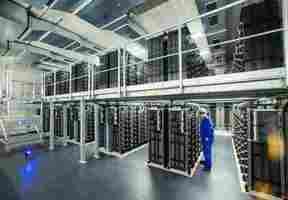

While much of the CCZ lies beneath the high seas where no single state has control, it’s adjacent to the exclusive economic zones of several Pacific island states, including the Cook Islands, Kiribati, Nauru and Tonga. Lacking the means to search for the metals themselves, these states have sponsored mining companies to take out licences with the International Seabed Authority (ISA), which is responsible for sustainably managing the seabed in international waters. This would allow these companies to explore the seabed and determine how viable mining is likely to be, and its potential environmental impact.
To date, ISA has approved 19 exploration contracts , 17 of which are in the CCZ. A Canadian company, The Metals Company (formerly DeepGreen Metals) has contracts with Tonga, Nauru and Kiribati.
With so little known about the biodiversity of this largely unexplored part of the ocean, it’s difficult to accurately predict how deep-sea mining will affect species here. Environmental organisations and scientists have argued for a moratorium on mining until more extensive research can be done.
Some Pacific islanders, including The Alliance of Solwara Warriors, representing indigenous communities in the Bismark and Solomon Seas of Papua New Guinea, have protested the lack of information given to local communities about the potential impact of mining . In April 2021, Pacific civil society groups wrote to the British government seeking support for a moratorium . Meanwhile, a former president of Kiribati, Anote Tong, has described deep-sea mining as “ inevitable ” and urged businesses to figure out how to do it safely.
But time is running out. Seven exploratory licences are due to expire in 2021 , making it imperative that either a moratorium is adopted internationally, or the ISA adopts a legal framework for determining the conditions under which extractive mining can take place.
From exploration to extraction
Work towards this framework has been ongoing since 2014. Despite this, the 168 nations of the ISA assembly have yet to agree a code for regulating extractive mining contracts. The ISA’s ambition to reach an agreement in 2020 was derailed by the pandemic, and it’s unclear whether meetings will go ahead in 2021. It’s likely that exploratory contracts will expire in the meantime, increasing pressure on the ISA from mining companies and those states sponsoring them to grant exploitation licences . Exploratory licences are regulated by the ISA. Without an agreed code, extractive ones are not.
Even if a consensus were reached, enforcing environmental safeguards would be difficult. Pinpointing responsibility for the source of any pollution or environmental damage is tricky when mining takes place in such deep water. There are also few, if any, physical boundaries between one mining area and another. The effects of mining on different ecosystems and habitats might take time to manifest.
International consensus on a moratorium is unlikely too. Mining companies have ploughed a lot of money into developing technology for operating at these depths. They will want to see a return on that, and so will their investors. States which have sponsored mining contracts – including some Pacific islands – will want to reap the royalties they have been promised .
Pacific island states find themselves on the horns of a dilemma. They are among the countries most vulnerable to climate change and so support strong action. But unless alternatives are found, the developed world’s green transition will probably accelerate demand for metals resting peacefully in the deepest parts of the ocean surrounding these islands. It will be the people here who will bear the costs of deep-sea mining undertaken without sufficient caution, not the drivers of electric cars in the global north.
This article by Sue Farran , Reader of Law, Newcastle University, is republished from The Conversation under a Creative Commons license. Read the original article .
Lufthansa’s posh plane can’t match the halcyon days of luxury aviation
Lufthansa Technik recently shared a teaser for their latest luxury plane cabin. It’s called the EXPLORER and is the brainchild of the VIP and Special Mission division. This division makes luxury cabins for jet planes, including Boeing 737, Airbus A320 family aircraft, A350s, and 747s.

But what’s on offer, and how does it compare to the halcyon glamour days of flying before you had to take your shoes off at the airport? I’ve had a look, and I have to say, I think earlier generations of rich people had it better for all its tech bells and whistles.
Lufthansa’s EXPLORER flying hotel
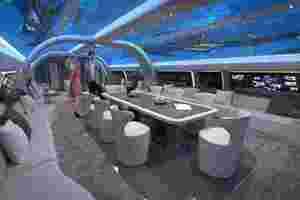

Lufthansa has created your very own personal “flying hotel” to provide you with all comforts and amenities that you can expect from a five-star hotel on the ground. The design owes its genesis to the superyacht ( otherwise known as a large and luxurious pleasure vessel).
The company invites you to:
Even better, each design is modular:
— Yep, you could bring your car on a plane, folks.
Cream leather, really?
But there’s way too much cream leather for my liking. Surely you’d just slide right off one of those seats when you hit turbulence? I prefer this old-school style with cushions you can sink into.
The window to roof projector seems a bit meh
The plane includes a large-scale integrated projection system for virtual content, extending from the windows to the ceiling in the multifunctional lounge area.
You can even make it simulate a disco – but, that looks like a pretty dull party to me, even if the plane comes with its very own DJ.
I think this is more my kind of party:
At least in the days before we relied on digital devices for our in-flight entertainment, we could spend our plane time flirting and drinking.
Where’s the bedroom?
Surely, we can agree, the best part of a private plane would be the ability to lie flat in a bed?
But, beds aren’t configured into the original EXPLORER design from what we can see. Weird.
Even these in-flight beds of yesteryear look pretty chill:
But the plane veranda is cool
If you want bizarre, part of the plane where the plane opens to a veranda. So you can stand around waiting for a president or something.
Despite private planes getting a ribbing at COP26, the industry is thriving
Wieland Timm is Head of sales at VIP and Special Mission Aircraft Services at Lufthansa Technik. He t old Aerotime that the VIP division’s revenue has increased over the last three years with extra staffing:
I think I’ve clarified that I like my flying green . But I’m also a hypocrite when it comes to flying. Sorry, but I do like the idea of being able to lie flat instead of seated (by the third flight and 25th hour I’d sell my cat to lie flat), and being served cocktails and super fancy food will never not appeal.
We can look forward to more info about this luxury design at the upcoming Dubai air show .
Belt drive vs chain: Which is best for your ebike?
If you’ve been considering buying your first ebike — or perhaps your second or third — chances are you’ve come across some models equipped with a belt drive instead of a traditional chain. But what difference does a belt drive really make, and is it actually worth the usual premium over a tried and trusted chain?
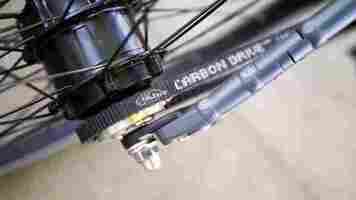
We’re here to help.
Until ebikes started to become popular, almost every bicycle on the market used a chain. But the advent of ebikes has increasingly made belt drives a popular alternative. The Gates Carbon Drive is by far the most popular of these, and it’s the one we’ll focus on the most. There are some alternatives too, but Gates’ belts are so ubiquitous that unless otherwise specified, you can assume we’re talking about this one brand. This isn’t a sponsored post or anything, it’s just the nature of the market right now.
Anyway, to answer the question: at its most basic level, a belt drive is exactly what it sounds like. Instead of a chain transmitting power from your legs to the rear wheel, a belt does the job instead.
The most often-cited benefit to a belt drive is durability. The Gates Carbon belt drive is reinforced with — you guessed it — carbon fiber. In case you haven’t heard, that stuff is pretty tough.
Gates’ carbon fiber belts were originally designed for high-power applications like motorcycles and industrial machinery. Ebikes are comparatively puny, so they should pretty much last forever. Gates says its CDX CenterTrack belt is rated for 10,000 miles under peak loads, while chains designed for ebikes “failed at only 275 miles.” In real-world usage, its ebike chains should be replaced every 2,000 miles, while a Gates belt is should last you up to 19,000 miles.
Of course, we’re taking Gates’ word for it here, but in my experience, hearing of a belt drive failing is exceedingly rare. It does happen, but only under extreme conditions or use (often situations in which a chain would have given up much earlier). Meanwhile, ebike chains are more prone to failure with mid-drive motors due to the high torque placed on them relative to a regular bike.
Durability aside, belt drives are almost completely silent, feel extra smooth while pedaling, require no lubrication, and won’t get grease on your pants. The only maintenance required is keeping the belt clear of too much debris and the occasional tensioning, which is easy to do at home (and involves strumming the belt like a guitar).
Plus, they just look pretty cool, if you ask me.
There are two big caveats to using a belt drive.
The most notable one is that belts are incompatible with traditional derailleurs. That means that virtually every belt-drive bike is either a single-speed (which isn’t the biggest deal when you have a motor to help), or uses internal gears.
Usually, belt-drive ebikes that aren’t single-speed use an internally-geared rear hub. That means it’s rare to find belt-drive ebikes that use rear hub motors and have multiple gears, although occasionally you’ll get bikes with gears closer to the pedals, such as a Pinion Gearbox or Schlumpf Drive . Still, those are the exception to the norm.
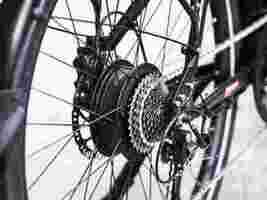

In other words, choosing between belt and chain-driven ebikes is often also a choice between internal and external gears. To some up some of the common pros and cons:
Internal gear hubs are usually a lot more durable as components are shielded from the elements and physical damage.
Derailleurs are usually lighter, although this is a marginal difference on most ebikes.
Internal gear hubs allow you to shift gears from a stop, but some don’t allow you to shift while pedaling. Derailleurs can only shift while the wheel is in motion, which can be annoying if you’re stuck in a high gear at a red light.
Internal gear hubs are usually less efficient at converting your pedaling into motion than a well-maintained chain and derailleur, and vary more depending on what gear you’re in. Studies show that chains are roughly 97-99.5% efficient and tend to be fairly consistent by brand. Internal gear hubs can vary dramatically depending on the brand, and even what specific gear you’re in; I’ve seen figures ranging from above 99% to as low as 80%.
On the other hand, “well-maintained” is an important caveat, as most people don’t go through the trouble of cleaning and lubricating their drivetrain on a regular basis. That should offset some of the difference .
Derailleurs often offer more gears overall for better finetuning of your pedaling cadence. But again, that’s often not necessary on an ebike.
Most belt drives also require an ebike with a split frame, meaning the frame has a cutout that allows you to remove the belt. That said, there are some companies that make split belts, such as Veer , but these are still pretty rare.
It’s also worth noting belt drive ebikes are normally more expensive. This is in part because of the belt itself, but also because most belt drive ebikes use mid-drive motors unless they are single-speed designs. Naturally, you can’t use a rear hub motor with an internal gear hub, as they’d have to occupy the same space.
There are some cheaper belt-drive ebikes too, like the Ride1Up roadster V2 (which uses a TopTrans belt). That said, the caveat to keep in mind with these alternative belts is that you might have more trouble finding a replacement should the belt actually fail.
Yes. If given the choice between an ebike with a belt drive and an ebike with a chain, all else being equal, you should probably choose the ebike with the belt drive. There are very few negatives to the technology, and it’s just all-around a more premium experience.
The problem is that all else isn’t usually equal. As mentioned, belt drive ebikes can be more expensive, they’re usually single speed or use internal gears, and an internal gear hub often adds a little bit to a bike’s weight. So the better question might be “is a belt drive worth it?”
To that, I’d say it ultimately comes down to price. In my experience, belt drives are primarily a really nice quality-of-life feature more than a must-have. In my day-to-day usage, my favorite thing about them is the silent, smooth operation, not getting grease on my pants, and requiring less maintenance overall.
While the durability is really nice for peace of mind, it’s not as if I’m breaking bike chains that often either. It’s only happened to me once, and fixing a chain isn’t that hard to do with the right toolkit. And while I don’t care about every bit of weight savings and pedaling efficiency possible, I can understand that some people prefer these qualities in a more traditional setup.
In other words, getting a bike with a plain old chain and derailleur shouldn’t be a deal-breaker if it otherwise checks all your boxes — unless you have unusual durability needs.
Still, ebikes with belt drives are becoming more common by the week and just make for a nicer ride experience. While a belt drive is not the only thing to consider when buying a new ebike, it sure is nice to have.